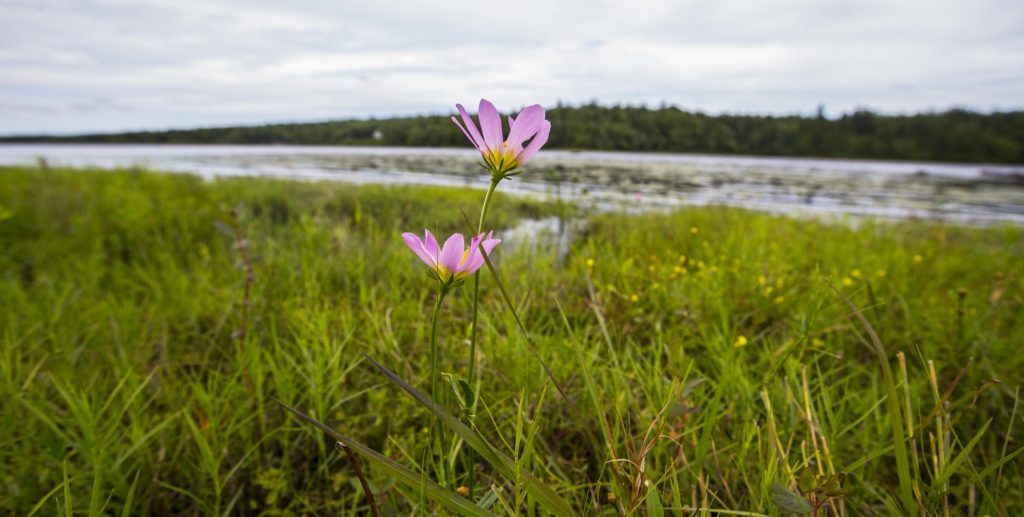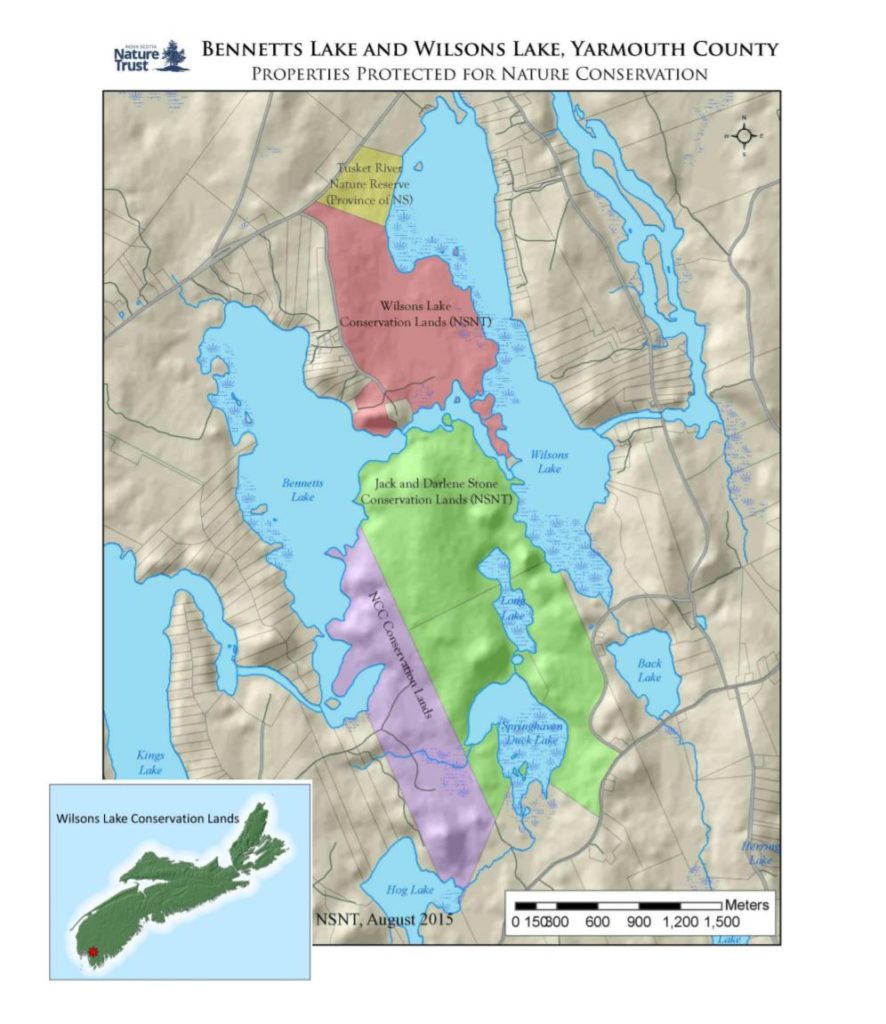Wilson’s Lake: Rare Plant Site Protected Forever
15 Aug 2015

A hotspot for Canadian endangered species conservation has been protected, forever, in Nova Scotia. The Nature Trust announced today the successful acquisition of the 300 acre Wilson’s Lake Conservation Lands, in Yarmouth County.
Southwestern Nova Scotia is home to a unique group of wetland plants known as Atlantic Coastal Plain Flora. Eleven of these plant species are on Canada’s endangered species list. They exist nowhere else in Canada. One property in particular has been a top conservation priority for decades, since the first discovery of these unique plants in Nova Scotia. The Nature Trust has now secured the long-sought-after site.
The Wilson’s Lake Conservation Lands protect over 2.5 kilometers of shoreline (on Wilsons/Bennetts Lake), as well as forests, wetlands, and vernal pools important for frogs and other amphibians. Most significantly, the property includes extensive, intact shoreline habitat critical for three nationally endangered plants: the delicate and beautiful Pink Coreopsis and Plymouth Gentian, and the small but resilient Water Pennywort. The site is also home to Longs Bulrush.
All four endangered plants are found only in Nova Scotia, nowhere else in Canada, and only on a small number of lakes. Plymouth Gentian grows in only three places in the world: A few lakes on the Tusket River, some ponds in Cape Cod and a few coastal rivers in the Carolinas, making its conservation here of global importance.
The Nature Trust has long recognised the ecological significance of the Tusket River. It has the highest diversity of these rare wetland species in Canada and is the only river with Pink Coreopsis and Plymouth Gentian. It truly is a globally significant river. In recognition of this significance, the Nature Trust began a building contiguous shoreline corridor of protected rare plant habitat centered around the biodiversity hotspot on the river, Wilsons Lake. Such a corridor is critical to provide adequate habitat to truly protect these species, and the natural processes and systems required for their survival, over time.
The new Wilson’s Lake Conservation Lands complete this conservation corridor. The site is bounded on the North by the Tusket River Nature Reserve, and will ultimately become part of this provincially managed Nature Reserve. It also connects with the Nature Trust’s Jack and Darlene Conservation Lands, and land protected by the Nature Conservancy of Canada. With this critical gap filled, the conservation corridor now protects a total of 1110 acres (450 ha) of contiguous habitat, encompassing 11 kilometers of intact shoreline critical for these endangered species.

